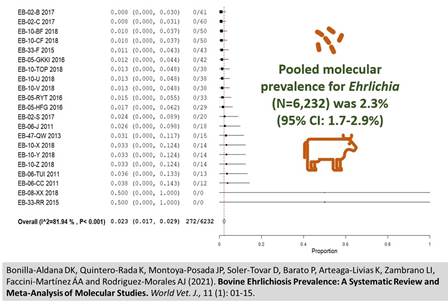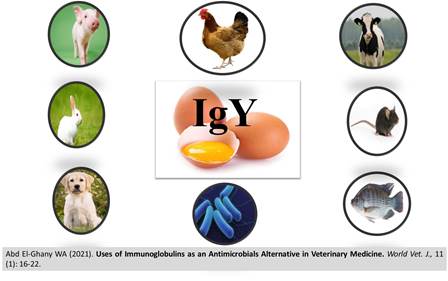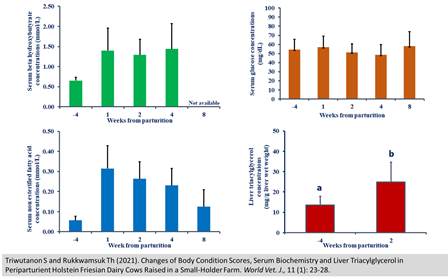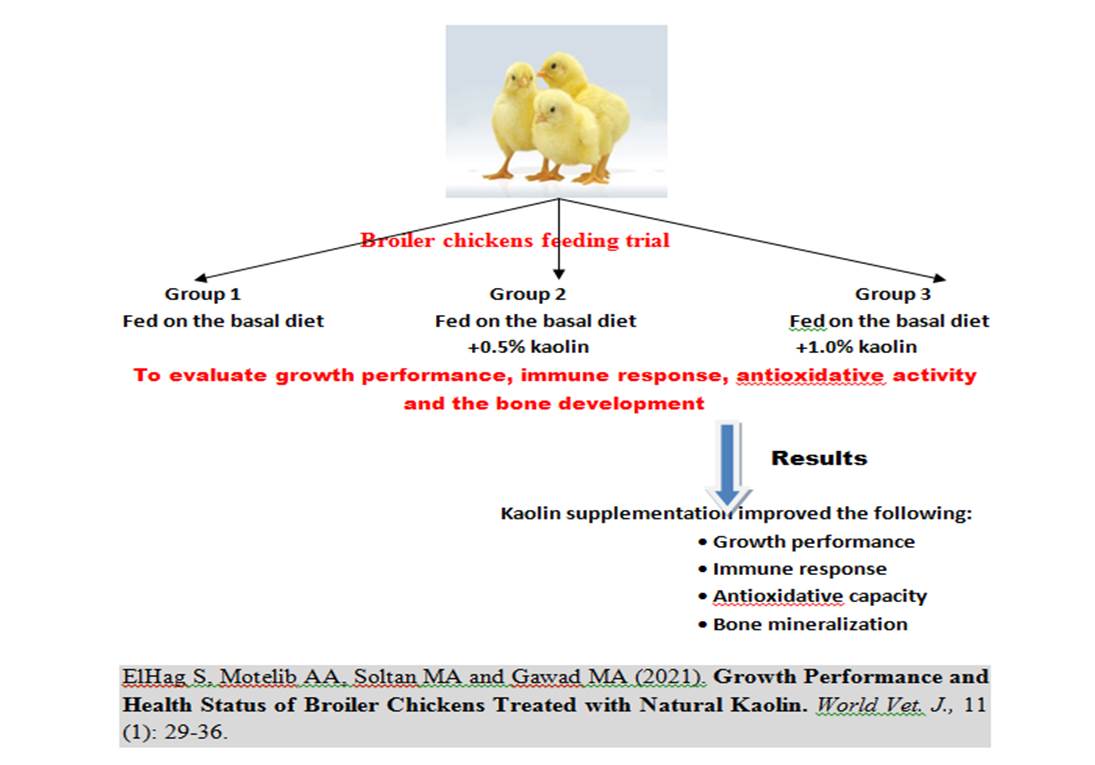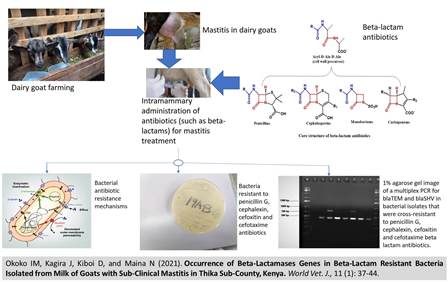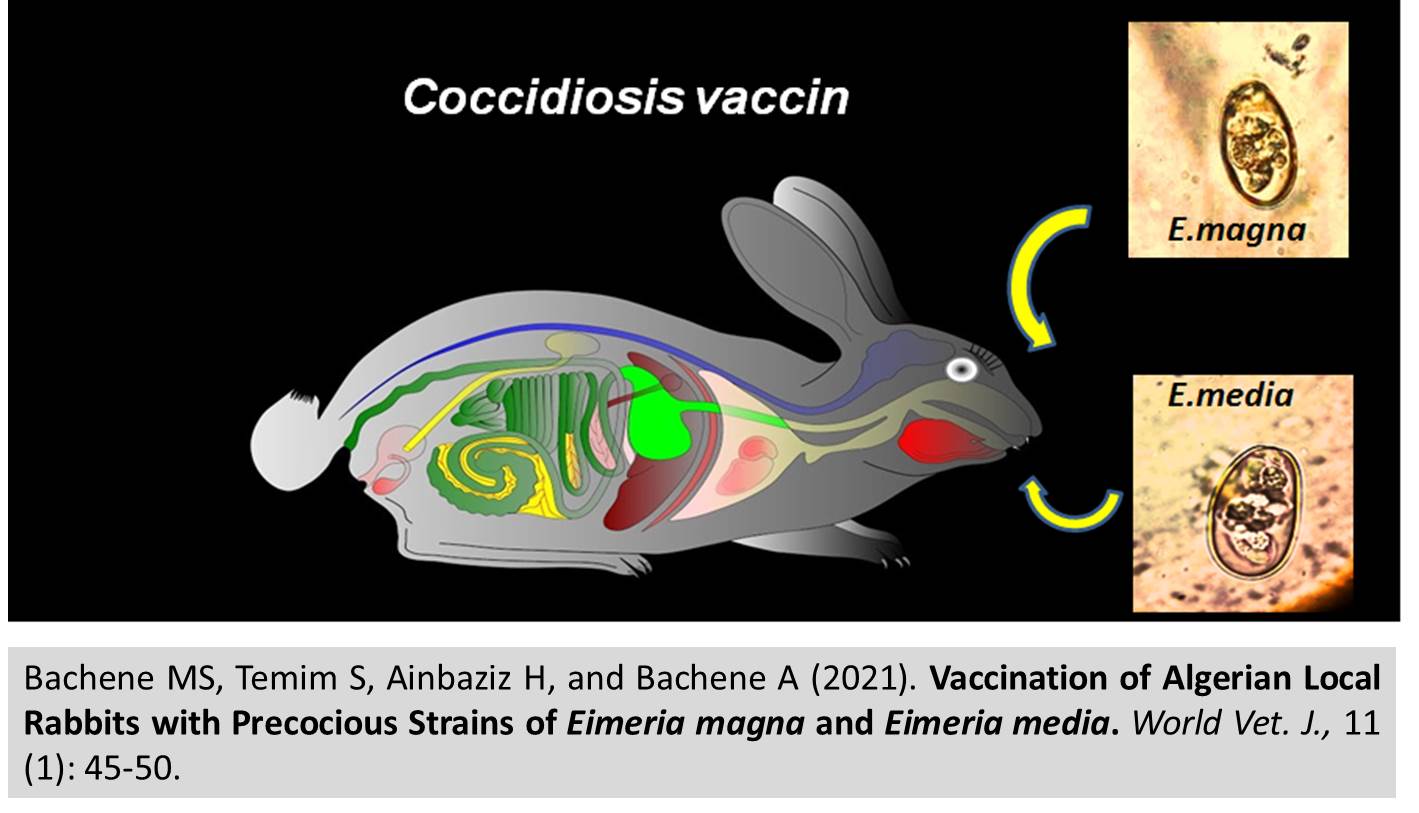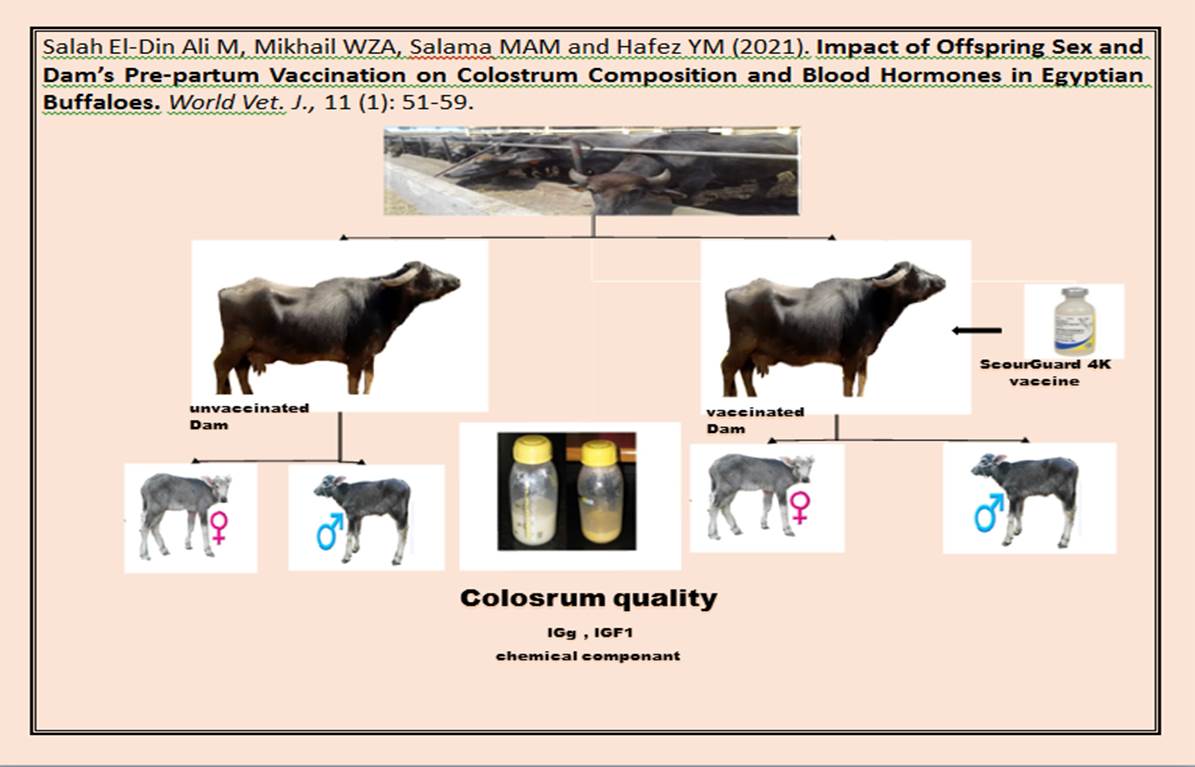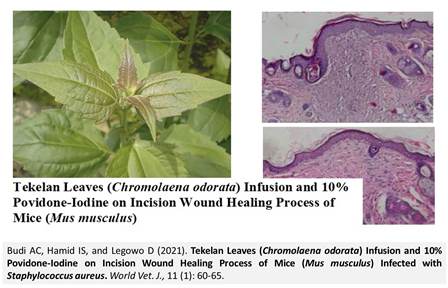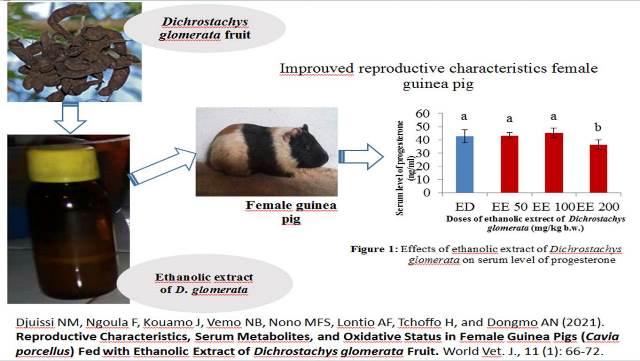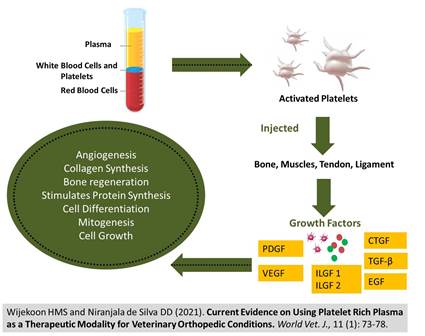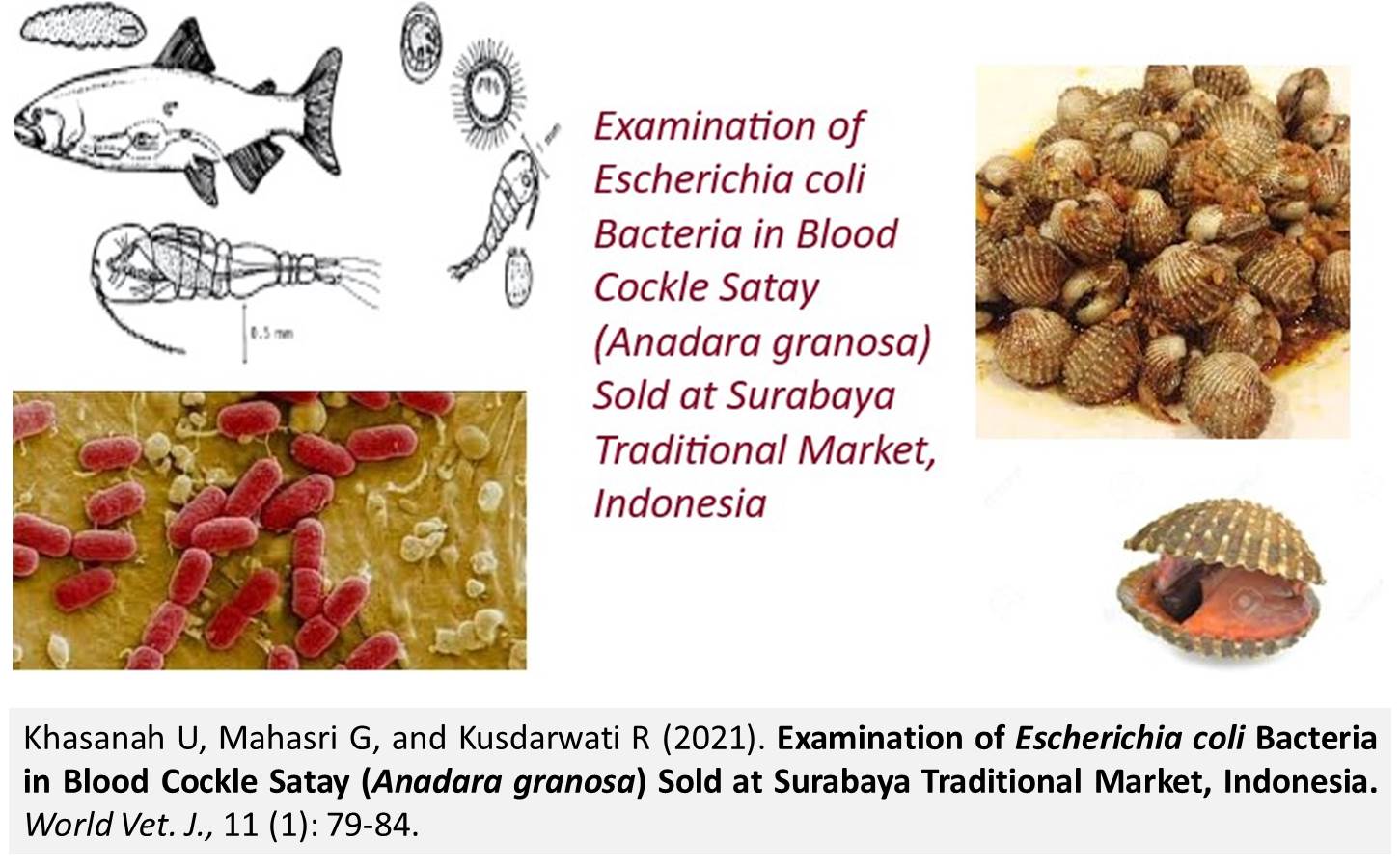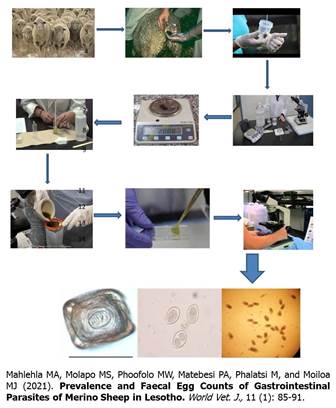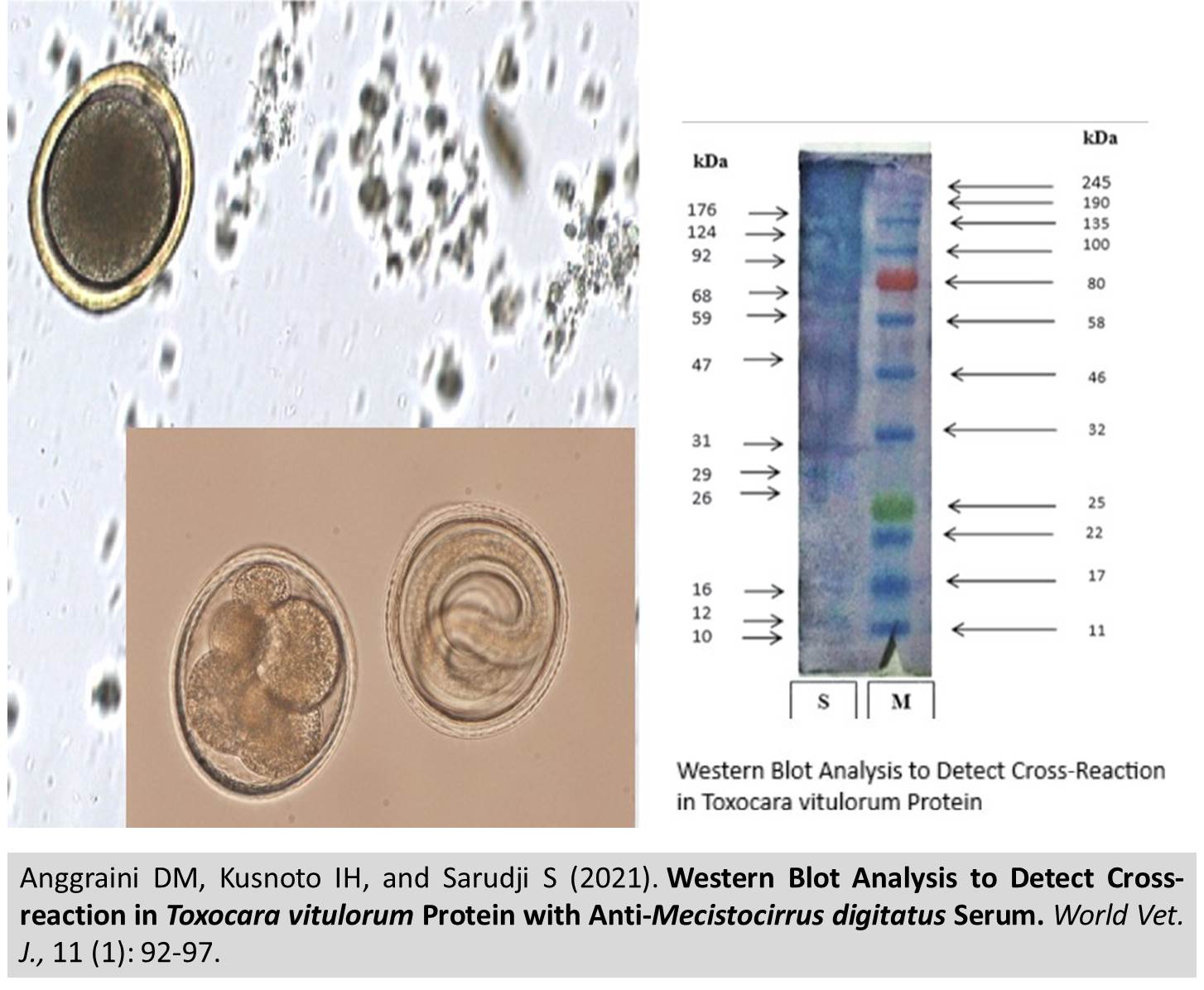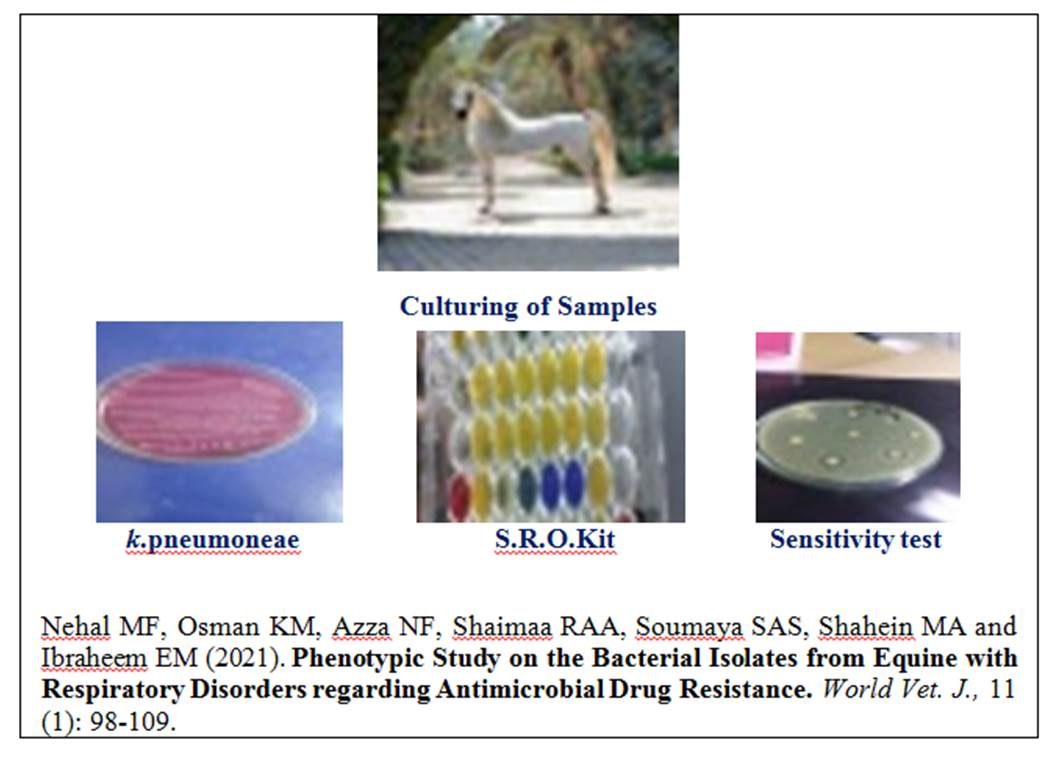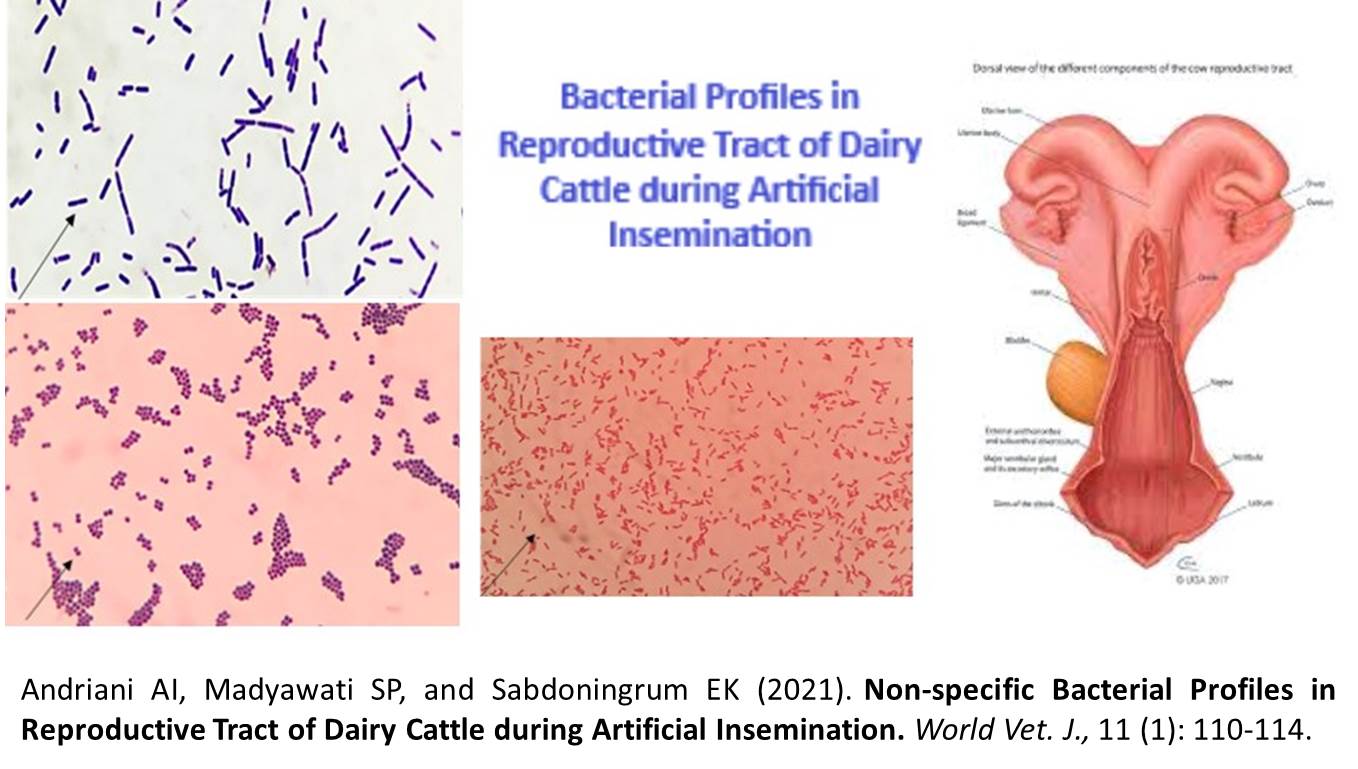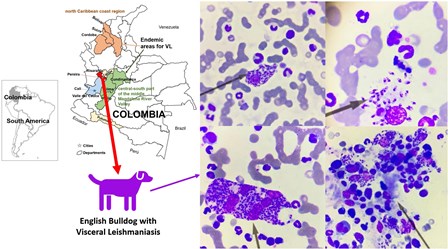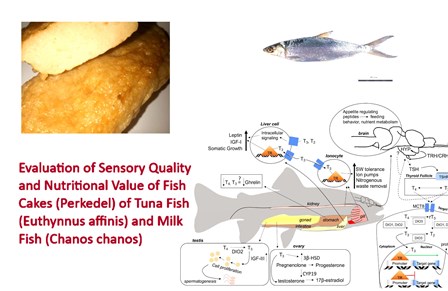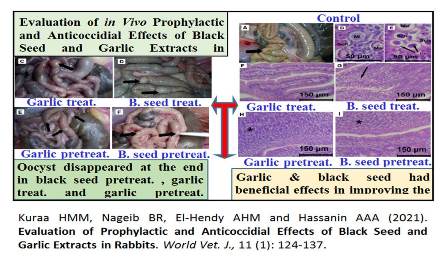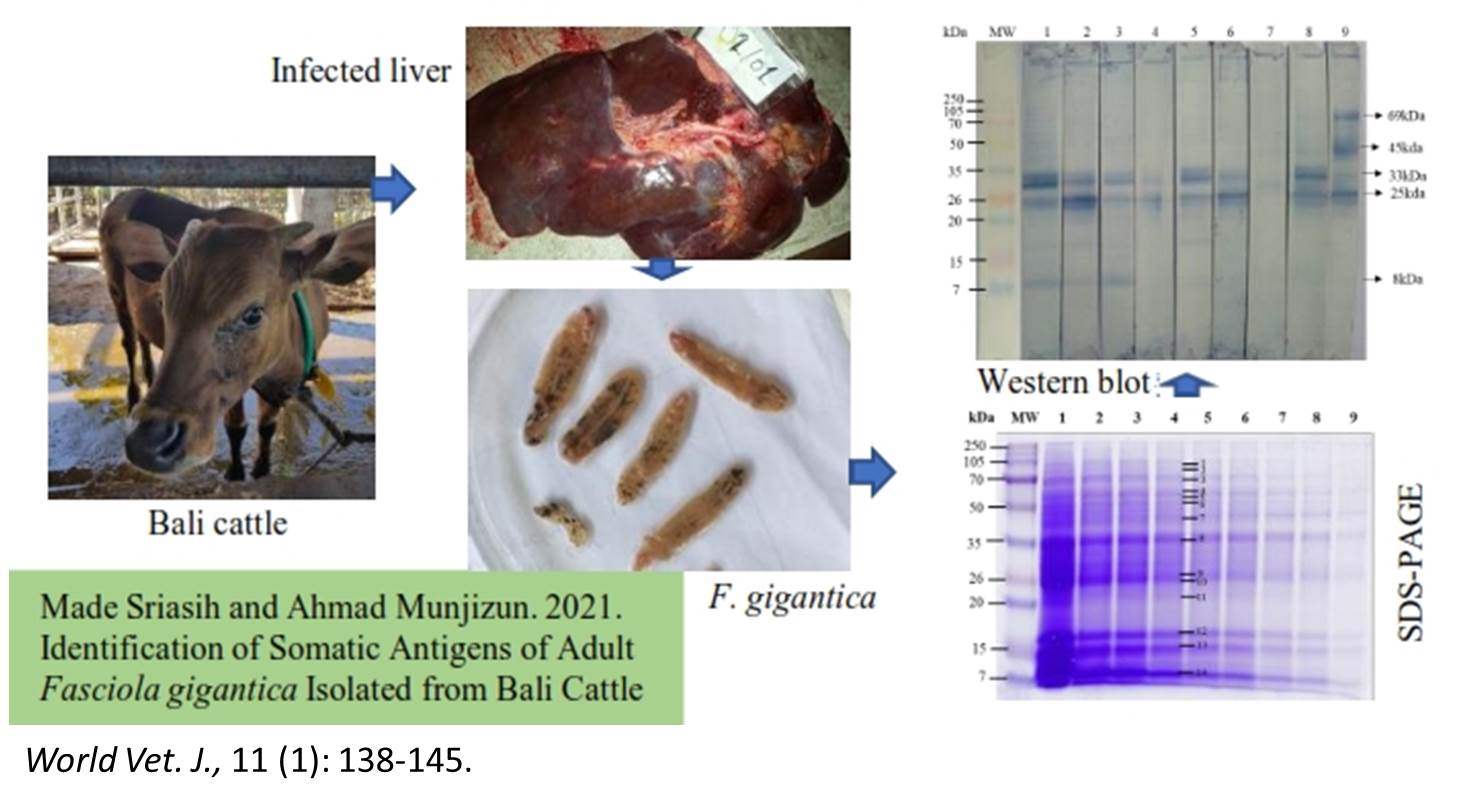Previous issue | Next issue | Archive
![]() Volume 11 (1); March 25, 2021 [Booklet] [EndNote XML for Agris]
Volume 11 (1); March 25, 2021 [Booklet] [EndNote XML for Agris]
Bovine Ehrlichiosis Prevalence: A Systematic Review and Meta-Analysis of Molecular Studies
Bonilla-Aldana DK, Quintero-Rada K, Montoya-Posada JP, Soler-Tovar D, Barato P, Arteaga-Livias K, Zambrano LI, Faccini-Martínez ÁA and Rodriguez-Morales AJ
This e-mail address is being protected from spambots. You need JavaScript enabled to view it
.
World Vet. J. 11(1): 01-15, 2021; pii:S232245682100001-11
DOI: https://dx.doi.org/10.54203/scil.2021.wvj1
ABSTRACT: While some Ehrlichia species, such as E. ruminantium and E. minasensis, are not popular even among veterinarians, they can infect cattle. The current study aimed to review studies on Ehrlichia spp. to evaluate its worldwide molecular prevalence, given the lack of information about bovine ehrlichiosis and the lack of previous systematic reviews and meta-analyses on this subject. In order to determine the molecular prevalence of Ehrlichia spp. in cattle, a systematic review of the literature was conducted in three databases. A meta-analysis with a random-effects model was performed to calculate the pooled prevalence with 95% confidence intervals (95% CI) and measures of heterogeneity were reported. Subgroup analyses were performed in terms of Ehrlichia species, country, and regions. The literature search yielded 1051 papers until August 1, 2019, with 71 studies entirely eligible for review. The pooled molecular prevalence for Ehrlichia at the individual level (N = 6232) was 2.3% (95% CI: 1.7-2.9%) with the highest value of 82.4%. Studies identified the highest pooled molecular prevalence of 6.6% (95% CI: 0.6-12.7%) for E. canis, followed by E. ruminantium (n = 4695, 75.33%) 52 studies, with 1.7% (95% CI: 1.1-2.3%) and E. chaffeensis with 1.5% (95% CI: 0.0-0.3%). Moreover, the obtained result was indicative of only one study addressing E. minasensis. As the findings suggested, heartwater (E. ruminantium infection) is a notifiable disease of domestic and wild ruminants, recorded by the World Organization for Animal Health. There is a possible risk of endemic heartwater in the Americas due to the climatic features. Furthermore, E. minasensis, E. chaffeensis, and E. canis were observed in cattle although the two last species could be a molecular misidentification with regard to their phylogenetic relationships with E. minasensis.
Keywords: Bacteria, Bovine, Ehrlichia, Systematic review, Tick-borne
[Full text-PDF] [XML] [Google Scholar] [Crossref Metadata] [Scopus ID: 85104008150] [Export from ePrint] [How to Cite]
Uses of Immunoglobulins as an Antimicrobials Alternative in Veterinary Medicine
World Vet. J. 11(1): 16-22, 2021; pii:S232245682100002-11
DOI: https://dx.doi.org/10.54203/scil.2021.wvj2
ABSTRACT: As a result of increasing the resistance to antimicrobials in the field of veterinary medicine that reflects on human health, there is a great demand to use some drug alternatives. The application of avian immunoglobulins (IgY) is regarded as an important alternative strategy. The IgYs have been produced by several techniques and applied for animals using different methods. In addition, egg yolk IgYs have many advantages over blood type ones. There are many uses of IgYs in veterinary medicine. They have been used for the prophylaxis and treatment of different infections especially the enteric ones in cattle, pigs, rabbits, dogs, rats, mice, and fish species. Moreover, several studies showed the importance of IgY for competing for the in vivo enteric pathogens in poultry and the in vitro foodborne pathogen. Therefore, it is important to put a spotlight on applications of egg yolk immunoglobulins IgY in veterinary medicine to overcome the problems of antimicrobials’ resistance as well as the tissue residues that adversely affect human health.
Keywords: Advantages, Animals, Poultry, Production, Yolk antibodies
[Full text-PDF] [XML] [Google Scholar] [Crossref Metadata] [Scopus ID: 85104012782] [Export from ePrint] [How to Cite]
Changes of Body Condition Scores, Serum Biochemistry and Liver Triacylglycerol in Periparturient Holstein Friesian Dairy Cows Raised in a Small-Holder Farm
Triwutanon S and Rukkwamsuk Th![]() .
.
World Vet. J. 11(1): 23-28, 2021; pii:S232245682100003-11
DOI: https://dx.doi.org/10.54203/scil.2021.wvj3
ABSTRACT: This Negative energy balance (NEB) inevitably occurs in periparturient dairy cows. Its consequences are related to reduced cows’ performances. Most studies concerning the NEB are performed in dairy cows of large-scale farms, particularly raised under non-tropical climate. The current study aimed to investigate the changes in body condition score, serum biochemical parameters, and liver triacylglycerol (TAG) accumulation in periparturient Holstein Friesian dairy cows raised by a small-holder farm. In this regard, 10 healthy pregnant dairy cows in a small-holder farm were recruited for the study. At 4 weeks before and 1, 2, 4, and 8 weeks after calving, blood samples were collected for determination of glucose, non-esterified fatty acid (NEFA), β-hydroxybutyrate (BHBA), and insulin-like growth factor-I (IGF-I) concentrations. BCS was evaluated at 4 weeks before and 2 weeks after calving. Liver samples were collected 4 weeks before and 2 weeks after calving to determine TAG concentration. Results revealed that serum NEFA and liver TAG concentration were elevated postpartum. Serum BHBA concentrations increased postpartum and the concentration indicated that dairy cows entered NEB condition as type I ketosis with a longer period. Serum IGF-I concentrations and BCS did not differ between before and after calving. In conclusion, dairy cows raised under small-holder tropical conditions suffered from serious NEB, though the cows had low milk production, as compared with the commercial non-tropical condition.
Keywords: Blood biochemistry, Dairy cow, Liver triacylglycerol, Negative energy balance, Small-holder farm
[Full text-PDF] [XML] [Google Scholar] [Crossref Metadata] [Scopus ID: 85104041605] [Export from ePrint] [How to Cite]
Growth Performance and Health Status of Broiler Chickens Treated with Natural Kaolin
ElHag S, Motelib AA, Soltan MA![]() and Gawad MA.
and Gawad MA.
World Vet. J. 11(1): 29-36, 2021; pii:S232245682100004-11
DOI: https://dx.doi.org/10.54203/scil.2021.wvj4
ABSTRACT: The The use of Kaolin as an inert ingredient in feed has been very common in the poultry industry. The present study aimed to investigate the effects of different inclusion rates of Egyptian kaolinite in broiler chickens’ diet on growth performance, immune response, some blood serum changes, and bone development. A total of 240 unsexed one-day-old Avian 48 breed chickens were used in this experiment. The chickens were individually weighed and randomly allotted into 3 equal groups (80 chickens per each group) and each group was subdivided into 4 replicates (20 chickens per replicate), which received one of the three experimental diets (0.0, 0.5, and 1.0% kaolin for groups 1, 2, and 3, respectively) during the experimental period (6 weeks). The obtained data revealed that kaolin addition at the dose of 0.5 or 1.0% in broiler chickens' diet insignificantly increased final body weight by 4.5% and 4.4%, respectively. On the other hand, it respectively decreased total feed intake by 1.0% and 1.8% and significantly improved the average feed conversion ratio and efficiency of energy utilization throughout the whole experimental period compared to the control. Moreover, kaolin addition had no adverse effect on the serum lipid profile and improved antioxidative activity through reduced nitric oxide and lipid peroxidase (malondialdehyde) concentrations or increased the activities of Glutathione peroxide, Catalase, and Superoxide dismutases in serum or liver tissues. Lysosomal and bactericidal activities were increased with kaolin addition at both levels in the broiler chickens’ diets. The present results suggested that the broiler chickens’ fed with kaolin-enriched diets improved growth, antioxidant activity, bone mineralization, and immune response.
Keywords: Antioxidant activity, Broiler chicken, Growth performance, Kaolin, Silicification, Strength
[Full text-PDF] [XML] [Google Scholar] [Crossref Metadata] [Scopus ID: 85104026323] [Export from ePrint] [How to Cite]
Occurrence of Beta-Lactamases Genes in Beta-Lactam Resistant Bacteria Isolated from Milk of Goats with Sub-Clinical Mastitis in Thika Sub-County, Kenya
Okoko IM, Kagira J![]() , Kiboi D, and Maina N.
, Kiboi D, and Maina N.
World Vet. J. 11(2): 37-44, 2021; pii:S232245682100005-11
DOI: https://dx.doi.org/10.54203/scil.2021.wvj5
ABSTRACT: For decades, beta-lactam antibiotics have played a critical role in the control of mastitis in animals. However, the emergence of beta-lactam-resistant bacteria poses a challenge to both human and veterinary medicine. In this regard, bacterial isolates from milk samples collected from dairy goats with sub-clinical mastitis from Thika Sub-county, Kenya, were used in the current study to interrogate the occurrence of beta-lactamases genes in bacterial isolates (Klebsiella pneumoniae, Staphylococcus aureus, and Acinetobacter spp., and Coagulase-negative Staphylococci) with known phenotypic resistance profiles to penicillin G, cephalexin, cefoxitin, and cefotaxime. Four target genes, blaTEM, blaSHV, blaCTX, blaOXA, and blaKPC were amplified using a polymerase chain reaction, and compared with Escherichia coli American Type Culture Collection 35218 and non-standard Klebsiella pneumonia positive controls. Out of the 46 samples, 44 samples (95.7%) harbored blaTEM with two samples of the 44 bacterial isolates, also possessing the blaSHV gene. Only one isolate of Klebsiella pneumonia and Acinetobacter spp had a combination of blaTEM and blaSHV. None of the bacteria had blaCTX, blaOXA, and blaKPC genes. The data indicated that sub-clinical mastitis in dairy goats in Thika Sub-county is associated with the bacteria carrying beta-lactamases genes, suggesting that the use of beta-lactam antibiotics for the treatment of sub-clinical mastitis may result in the treatment failure and potential transfer of the infectious bacteria to humans and other animals. The current study recommends the use of an alternative class of antibiotics for the management of beta-lactam-resistant bacteria.
Keywords: Bacteria, Beta-lactam resistance, Beta-lactamases, Sub-clinical mastitis.
[Full text-PDF] [XML] [Google Scholar] [Crossref Metadata] [Scopus ID: 85104042190] [Export from ePrint] [How to Cite]
Vaccination of Algerian Local Rabbits with Precocious Strains of Eimeria magna and Eimeria media
Bachene MS![]() , Temim S, Ainbaziz H, and Bachene A.
, Temim S, Ainbaziz H, and Bachene A.
World Vet. J. 11(1): 45-50, 2021; pii:S232245682100006-11
DOI: https://dx.doi.org/10.54203/scil.2021.wvj6
ABSTRACT: The present study was conducted to assess the safety and the efficacy of a vaccine containing the Algerian precocious strains of Eimeria magna and Eimeria media used separately or together against rabbit coccidiosis. The samples consisted of 56 young rabbits reared in specific pathogen-free conditions. Following the challenge inoculation, statistically significant decreases in oocyst excretion were noticed in the vaccinated rabbits with the precocious strain of Eimeria magna, Eimeria media, and both species leading toa good immune response acquired by the vaccination associated with a good growth rate. Moreover, there was a statistically significant increase in oocyst output following the challenge in all challenged groups. Unlike the vaccinated groups, the challenged groups showed poor weight gains. More than 50% of the young rabbits from all the challenged groups presented diarrhea. Consequently, these precocious strains constitute good candidates for mono or polyvalent anticoccidial vaccines in the future.
Keywords: Precocious strain, Rabbits, Vaccination, Wild strain.
[Full text-PDF] [XML] [Google Scholar] [Crossref Metadata] [Scopus ID: 85104009988] [Export from ePrint] [How to Cite]
Impact of Offspring Sex and Dam’s Pre-partum Vaccination on Colostrum Composition and Blood Hormones in Egyptian Buffaloes
Salah El-Din Ali M![]() , Mikhail WZA, Salama MAM and Hafez YM.
, Mikhail WZA, Salama MAM and Hafez YM.
World Vet. J. 11(1): 51-59, 2021; pii:S232245682100007-11
DOI: https://dx.doi.org/10.54203/scil.2021.wvj7
ABSTRACT: An The aim of the present research was to determine the effect of both the gender of the new-born calf and the pre-partum vaccination status of the dam (ScourGuard-4K) on the chemical composition and some biological parameters of the colostrum. Blood serum was collected from four groups of pregnant dams (four animals in each group) during the dry period (vaccinated buffalo dams pregnant with a male fetus, vaccinated buffalo dams pregnant with a female fetus, unvaccinated buffalo dams pregnant with a male fetus, and unvaccinated buffalo dams pregnant with a female fetus), in the pregnancy period, at the giving-birth period and after 24 hours of postpartum. The levels of insulin-like growth factor hormone (IGF-1) and immunoglobuline G (IgG) were calculated in the maternal blood serum at the assigned periods. Colostrum samples were collected at the birth time and 6, 12, 24, 48, and 72 hours after birth for measuring the chemical composition of the colostrum, as well as levels of IgG and IGF-1. Results of the current study showed that colostrum of dams that gave birth to male fetus had a richer content of IgG and IGF-1 levels and a higher percentage of total solids, solids-not-fat, total protein, fat, and lactose. Additionally, vaccination improved the same colostrum components except for IGF-1, which was not positively influenced by the vaccination. Generally, colostrum components were the highest at the birth time, then it decreased gradually up to 72 hours after the birth except that for the percentage of fat and lactose which showed gradual increases up to 72 hours to reach the normal composition of milk.
Keywords: Blood hormones, Colostrogenesis, Egyptian buffaloes, Offspring sex, ScourGuard-4k
[Full text-PDF] [XML] [Google Scholar] [Crossref Metadata] [Scopus ID: 85104034030] [Export from ePrint] [How to Cite]
Tekelan Leaves (Chromolaena odorata) Infusion and 10% Povidone-Iodine on Incision Wound Healing Process of Mice (Mus musculus) Infected with Staphylococcus aureus
Budi AC, Hamid IS![]() and Legowo D.
and Legowo D.
World Vet. J. 11(1): 60-65, 2021; pii:S232245682100008-11
DOI: https://dx.doi.org/10.54203/scil.2021.wvj8
ABSTRACT: Skin is considered to be the most prone organ to injury and infection compared to other body organs. Skin infections are most commonly caused by Staphylococcus aureus. The most commonly used synthetic drugs to overcome skin problems is Povidone-iodine. Considering the Indonesian traditional method, injuries could be cured by dripping Tekelan leaves (Chromolaena odorata) infusion on the wounded skin area. This study aimed to compare the treatment effects of Tekelan leaves (Chromolaena odorata) infusion and povidone-iodine in the wound healing process of mice skin. The subjects of this study were 25 mice (Mus musculus) which were incised and infected with Staphylococcus aureus in 5 groups, namely, P0 (without treatment), P1 (povidone-iodine 10%), P2 (Tekelan infusion 5%), P3 (Tekelan infusion 10%), and P4 (Tekelan infusion 20%). Observations were made microscopically on wound conditions based on a total assessment of the four observed parameters (epithelization, inflammation rate, connective tissue proliferation, and angiogenesis). The results showed that the total observation value in the P0 and P2 groups was lower than the other groups. The P1 group obtained the highest score. The Kruskal-Wallis test showed a significant difference among the treatment groups (p < 0.05). While the Mann Whitney test indicated P1 had a significant difference with P0, P2, and P3, it had no significant difference with P4. It can be concluded that the Tekelan Leaves (Chromolaena odorata) infusion can be used as an alternative of povidone-iodine with an optimal concentration of 20%.
Keywords: Chromolaena odorata, Histopathology, Povidone-iodine, Skin, Wound healing
[Full text-PDF] [XML] [Google Scholar] [Crossref Metadata] [Scopus ID: 85104039352] [Export from ePrint] [How to Cite]
Reproductive Characteristics, Serum Metabolites, and Oxidative Status in Female Guinea Pigs (Cavia porcellus) Fed with Ethanolic Extract of Dichrostachys glomerata Fruit
Djuissi NM, Ngoula F![]() , Kouamo J, Vemo NB, Nono MFS, Lontio AF, Tchoffo H, and Dongmo AN.
, Kouamo J, Vemo NB, Nono MFS, Lontio AF, Tchoffo H, and Dongmo AN.
World Vet. J. 11(1): 66-72, 2021; pii:S232245682100009-11
DOI: https://dx.doi.org/10.54203/scil.2021.wvj9
ABSTRACT: Dichrostachys glomerata (D. glomerata) is an aromatic plant which is used as a spice in cooking and Cameroonian traditional medicine to treat infertility in men. This work was designed to highlight the effects of the ethanolic extract of D. glomerata on oxidative status, serum metabolites and reproductive characteristics in female guinea pigs (Cavia porcellus). A total of 48 primiparous female guinea pigs, aged 4 months old with the body weight of 400 ± 10 g, were divided into four groups with two replications per group (6 guinea pigs each). During 90 days of trial, Group 1 (control group) orally received 1 ml/kg b.w. of distilled water daily, and groups 2, 3, and 4 received D. glomerata ethanolic extract once a day at doses of 50, 100, and 200 mg/kg b.w. using the same method of administration, respectively, for 90 days, including 60 days of gestation. After the first 30 days of treatment, mating was done by placing one non-treated male into cages containing six treated females. At the end of the treatment, data were collected on reproductive characteristics, serum metabolites, and oxidative stress markers. The results revealed that the ethanolic extract of D. glomerata induced a significant decrease in the number of post-implantation resorption and ovaries weight. Groups 3 and 4 showed a significant increase in the number of fetuses per dam and viable fetuses as well as placenta weight, compared to the control group. The serum level of progesterone significantly decreased in the group treated with 200 mg/kg D. Glomerata, compared to the other treated groups. The extract at 100 mg/kg body weight showed a significant increase in fetuses weight and fetuses crown-rump length, compared to the control group. Catalase activity significantly increased in the control group than D. glomerata treated groups. In conclusion, ethanolic extract of D. glomerata minimized reproductive stress and subsequently improved the reproductive performance of guinea pigs.
Keywords: Dichrostachys glomerata, Guinea Pig, Oxidative Stress, Reproduction, Serum Metabolites
[Full text-PDF] [XML] [Google Scholar] [Crossref Metadata] [Scopus ID: 85104043423] [Export from ePrint] [How to Cite]
Current Evidence on Using Platelet Rich Plasma as a Therapeutic Modality for Veterinary Orthopedic Conditions
Wijekoon HMS![]() and Niranjala de Silva DD.
and Niranjala de Silva DD.
World Vet. J. 11(2): 73-78, 2021; pii:S232245682100010-11
DOI: https://dx.doi.org/10.54203/scil.2021.wvj10
ABSTRACT: This review evaluates the findings of available clinical literature on the use of platelet-rich plasma (PRP) to develop evidence-based recommendations for treating various musculoskeletal issues that arise in veterinary practice. The use of PRP-based treatments for various orthopedic conditions is rapidly evolving as a promising treatment modality; however, its true effectiveness has yet to be elucidated. Application of PRP has been reported in humans for a variety of orthopedic conditions. Although the majority of the veterinary literature on PRP reports its use in equine patients, there is a dearth of evidence addressing its use in canine patients. Nevertheless, evidence of the efficacy of PRP has appeared to be highly variable depending on its specific indication, particularly in musculoskeletal disorders. This review aims to present the available information on the efficacy of PRP therapy in veterinary orthopedic conditions and describes factors influencing its use, the limitations of PRP therapy, and future directions of PRP research and therapy.
Keywords: Musculoskeletal diseases, Orthopedic, Platelet-rich plasma, Veterinary
[Full text-PDF] [XML] [Google Scholar] [Crossref Metadata] [Scopus ID: 85104018298] [Export from ePrint] [How to Cite]
Examination of Escherichia coli Bacteria in Blood Cockle Satay (Anadara granosa) Sold at Surabaya Traditional Market, Indonesia
Khasanah U, Mahasri G![]() , and Kusdarwati R.
, and Kusdarwati R.
World Vet. J. 11(2): 79-84, 2021; pii:S232245682100011-11
DOI: https://dx.doi.org/10.54203/scil.2021.wvj11
ABSTRACT: Cockle satay is one of the Surabaya local food made from the blood cockle (Anadara granosa). Blood cockle, commonly known as a filter feeder, is found in many Surabaya traditional markets. However, it potentially accumulates pollutant substances, both heavy metal or microbial so that improper handling and processing can cause pathogenic bacteria contamination. The present study aimed to investigate the contamination of Escherichia coli (E. coli) bacteria in blood cockle satay (Anadara granosa) sold at Surabaya traditional market. The current study used a descriptive observational research design with a quantitative approach. A total of 11 samples were employed using cluster sampling. The obtained data were compared with those of Bergey’s manual of determinative bacteriology and Indonesian national standard. Based on the obtained results, five samples included E. coli with negative Methyl Red (MR) characteristics, negative Voges-Proskauer (VP) negative citric and positive indole. The Most Probable Number test for six samples indicated a value of <3.0 mpn/gr for one sample, 3.0 mpn/gr for two samples, and 3.6 mpn/gr for three samples. It can be concluded that the blood cockle satay samples sold at Surabaya traditional market (Indonesia) were contaminated with E. coli bacteria.
Keywords: Blood Cockle, Escherichia coli, Food product, Indonesia.
[Full text-PDF] [XML] [Google Scholar] [Crossref Metadata] [Scopus ID: 85104026931] [Export from ePrint] [How to Cite]
Prevalence and Faecal Egg Counts of Gastrointestinal Parasites of Merino Sheep in Lesotho
Mahlehla MA![]() , Molapo MS, Phoofolo MW, Matebesi PA, Phalatsi M, and Moiloa MJ.
, Molapo MS, Phoofolo MW, Matebesi PA, Phalatsi M, and Moiloa MJ.
World Vet. J. 11(1): 85-91, 2021; pii:S232245682100012-11
DOI: https://dx.doi.org/10.54203/scil.2021.wvj12
ABSTRACT: The present study aimed to evaluate the effect of the agroecological zone, host age, and gender on the prevalence and faecal egg load of gastrointestinal parasites (GIPs) for six months (July to December) in the Maseru and Quthing districts, Lesotho. A total of 1919 faecal samples were examined using the McMaster technique. The data were analyzed through generalized estimating equations (GEE) under the binary logistic regression model to determine the significant differences for the GIPs prevalence. Moreover, faecal egg counts (FEC) data were analyzed for repeated measures using GEE. In total, three types of GIPs, namely nematodes, coccidia, and cestodes were identified in this study. The overall prevalence rates of nematodes, coccidia, and cestodes were 53.9%, 46.5%, and 4.3% in the Maseru district, respectively. Furthermore, the Quthing district indicated the prevalence rates of 65.0%, 38.2%, and 0.9% for nematodes, coccidia, and cestodes, respectively. In the Maseru district, the overall faecal egg counts for nematodes, coccidia, and cestodes were within the ranges of 0-20.3, 0-90, and 0-600 eggs per gram, respectively. Additionally, the faecal egg counts in the Quthing district ranged from 0 to 8.000, 6.700, and 2.000 eggs per gram for nematodes, coccidia, and cestodes, respectively. The majority of the Merino sheep (>69%) in both districts had lower faecal egg counts (100-800) per gram. The agroecological zone affected the nematode infestation in both districts. Coccidia in the Quthing was higher in the mountain areas. In the Maseru district, the nematode infestation was not age-dependent; however, in the Quthing district, the prevalence was higher in juveniles, compared to adults. Age and gender did not affect the prevalence and faecal egg counts of nematodes and coccidia. The coccidian faecal egg loads were higher in females, compared to males. Merino sheep in Lesotho are mostly infected with gastrointestinal nematodes and protozoal coccidia, which could have a tremendous impact on their health and productivity. It is, therefore, of significant importance to develop the deworming strategy for sheep of different age and gender groups in different agroecological zones.
Keywords: Age, Agroecological zones, Gastrointestinal parasites, Gender, Lesotho, Prevalence
[Full text-PDF] [XML] [Google Scholar] [Crossref Metadata] [Scopus ID: 85104040039] [Export from ePrint] [How to Cite]
Western Blot Analysis to Detect Cross-reaction in Toxocara vitulorum Protein with Anti-Mecistocirrus digitatus Serum
Anggraini DM, Kusnoto IH![]() , and Sarudji S.
, and Sarudji S.
World Vet. J. 11(1): 92-97, 2021; pii:S232245682100013-11
DOI: https://dx.doi.org/10.54203/scil.2021.wvj13
ABSTRACT: Worm infections are found in livestock and can be transmitted to humans. Toxocara vitulorum is a worm species which commonly infected people. Cross-reaction among worms can generate false positive to establish helminthiasis diagnosis through antibody inspection. This study aimed to determine specific proteins that caused cross-reaction between Toxocara vitulorum antigen and anti-M. digitatus serum by using the western blot technique. In the present study, the whole worms extracted of T. vitulorum and M. digitatus have been used to make polyclonal antibodies from M. digitatus with Wistar rats as hosts. The cross-reaction between whole worm extract of T. vitulorum protein and anti-M. digitatus serum obtained 12 protein bands that each relative molecular mass (Mr) valued of 176, 124, 92, 68, 59, 47, 31, 29, 26, 16, 12, and 10 kDa. Cross-reaction occurred between T. vitulorum protein and anti-M. digitatus.
Key words: Cross-reaction, Mecistocirrus digitatus, Specific protein, Toxocara vitulorum, Western blot
[Full text-PDF] [XML] [Google Scholar] [Crossref Metadata] [Scopus ID: 85104045950] [Export from ePrint] [How to Cite]
Phenotypic Study on the Bacterial Isolates from Equine with Respiratory Disorders regarding Antimicrobial Drug Resistance
Nehal MF, Osman KM, Azza NF, Shaimaa RAA, Soumaya SAS![]() , Shahein MA and Ibraheem EM.
, Shahein MA and Ibraheem EM.
World Vet. J. 11(1): 98-109, 2021; pii:S232245682100014-11
DOI: https://dx.doi.org/10.54203/scil.2021.wvj14
ABSTRACT: Upper respiratory tract infection and pneumonia in foals are primarily caused by a bacterial infection. Gram-negative bacteria are commonly found in neonatal pneumonia although gram-positive and mixed infections could be accompanied. The current study aimed to detect the different pathogens causing respiratory disorders in the equine, describe the antimicrobial resistance in these pathogens, and determine the types of antimicrobial isolates. A total of 203 different samples were collected from 42 horse foals, 5 adult horses, and 4 donkey foals from June 2019 to April 2020. All samples were subjected to bacteriology analysis and isolated bacteria were analyzed using susceptibility test for different antibacterial agents. The findings indicated that 38 (74.5%) animals were positive for the isolation of bacteria causing respiratory disorders. The most predominant isolates were Klebsiella pneumoniae subsp. Pneumoniae followed by Staphylococcus aureus, Streptococcus equi, Pseudomonas aeruginosa, Streptococcus zooepidemicus, Proteus mirabilis, Rhodococcus equi, Stenotrophomonas maltophilia, and Streptococcus mitis. Stenotrophomonas maltophilia is isolated from all organs, including the lungs. All K. pneumoniae isolates were sensitive to lomefloxacin, cefotaxime, meropenem, enrofloxacin, neomycin, and chloramphenicol. The Pseudomonas aerugenosa (P. aeruginosa) is sensitive to aztreonam and 20% of isolates sensitive to Piperacillin-tazobactam. All Proteus mirabilis were sensitive to ampicillin-sulbactam, piperacillin-tazobactam, and cefoperazone. Stenotrophomonas maltophilia was only sensitive to oxytetracycline and lomefloxacin. Staphylococcus aureus was susceptible to Piperacillin-tazobactam (50%), 25% to lomefloxacin; Streptococcus equi were sensitive to vancomycin 33.3% while 16.7% to erythromycin and doxycycline, Streptococcus zooepidemicus (100%) were sensitive to cefotaxime, meropenem, and doxycycline. All isolates of Enterococcus species were sensitive to penicillin, piperacillin-tazobactam, and lomefloxacin. Moreover, Rhodococcus equi (one isolate) was only sensitive to clarithromycin. The antimicrobial susceptibility test illustrated the presence of multidrug-resistant and pan-drug resistant isolates which proved the indiscriminate and extensive use of antibiotics. In conclusion, resistance monitoring data and risk assessment identified several direct and/or indirect predisposing factors to be potentially associated with MDR development in the equine health sector of Egypt. The predisposing factors may be attributed to insufficient veterinary healthcare, monitoring, and regulatory services, in addition to the intervention of animal health service providers, and/ or farmers’ lack of knowledge about drugs. The misuse and overuse of antibiotics have led to the evolution of antibiotic-resistant bacteria in equine in Egypt.
Keywords: Antimicrobial agents, Klebsiella pneumoniae, Streptococcus zooepidemicus.
[Full text-PDF] [XML] [Google Scholar] [Crossref Metadata] [Scopus ID: 85104064748] [Export from ePrint] [How to Cite]
Non-specific Bacterial Profiles in Reproductive Tract of Dairy Cattle during Artificial Insemination
Andriani AI, Madyawati SP![]() , and Sabdoningrum EK.
, and Sabdoningrum EK.
World Vet. J. 11(1): 110-114, 2021; pii:S232245682100015-11
DOI: https://dx.doi.org/10.54203/scil.2021.wvj15
ABSTRACT: One of the causes of low reproductive efficiency in dairy cattle is the presence of reproductive disorders caused by a non-specific bacterial infection. The aim of the present study was to isolate and identify the genus of non-specific bacteria in the reproductive tract of dairy cattle during artificial insemination. A total of 10 samples in the form of mucus attached to the plastic sheath used after artificial insemination in dairy cattle were collected in the study. The samples were subjected to bacterial isolation and identification. The obtained results of the study indicated that Staphylococcus was the dominant genus found (90%). On the other hand, other genera were Escherichia (60%) and Corynebacterium (20%).
Keywords: Artificial Insemination, Dairy Cattle, Non-Specific Bacteria, Reproductive Tract
[Full text-PDF] [XML] [Google Scholar] [Crossref Metadata] [Scopus ID: 85120033871] [Export from ePrint] [How to Cite]
An Urban Case of Canine Visceral Leishmaniasis in the Municipality of Pereira, Colombia
González-Colonia LV, Bonilla-Aldana DK, Álvarez-Serrano MP, Granados-Hincapie LY, Pinilla-Ticora LC, and Rodríguez-Morales AJ![]() .
.
World Vet. J. 11(1): 115-118, 2021; pii:S232245682100016-11
DOI: https://dx.doi.org/10.54203/scil.2021.wvj16
ABSTRACT: American visceral leishmaniasis (VL) is caused by Leishmania infantum/chagasi, transmitted by the sandflies Lutzomyia longipalpis and Lu. evansi. Dogs are the main reservoir and source for zoonotic infections in humans. Therefore, it is of utmost importance to diagnose such diseases in domestic animals to maintain public health. In 2019, the authors of the present study observed intracellular amastigotes in Giemsa-stained bone marrow smear using a real-time qPCR (parasite load was 484,336 DNA copies/mL), a canine visceral leishmaniasis (CVL) case caused by L. infantum/chagasi, in a 22-month-old male, English bulldog from Pereira, Colombia, a municipality not previously considered endemic for CVL nor human VL. Therefore, further field studies are necessary to determine if there is a low-grade circulation of this parasite among dogs and other animal reservoirs in the area, also entomological surveys are of utmost importance, as well as highlighting the clinical suspicion of this disease in domestic animals and humans.
Keywords: Colombia, Dog, Leishmaniasis, Non-endemic area, Visceral, Zoonotic
[Full text-PDF] [XML] [Google Scholar] [Crossref Metadata] [Scopus ID: 85107945838] [Export from ePrint] [How to Cite]
Evaluation of Sensory Quality and Nutritional Value of Fish Cakes (Perkedel) Made by Tuna Fish (Euthynnus affinis) and Milk Fish (Chanos chanos)
Prastica EE, Masithah ED![]() , and Pursetyo KT.
, and Pursetyo KT.
World Vet. J. 11(1): 119-123, 2021; pii:S232245682100017-11
DOI: https://dx.doi.org/10.54203/scil.2021.wvj17
ABSTRACT: Fish Cakes (Perkedel) is Indonesian fried patties, most commonly made from mashed potatoes mix with beef or chicken. This research was conducted to determine the sensory quality and the best nutritional value of the cakes which are composed of tuna fish and milkfish. The study used an experimental method with the main parameters of sensory quality (organoleptic test) and nutritional value (proximate analysis) in seven different cake treatments. The results showed that the composition of tuna fish and milkfish of fish cakes had a very significant effect on the color and aroma aspects, while the texture and taste aspects were not significantly different among the treatments. The findings indicated that the composition of tuna fish and milkfish only affected color and aroma. The best formulation of the fish cake was on Perkedel 7 (P7) which has a sufficiently good organoleptic color, aroma, texture, and taste with higher nutrient content, compared with other treatments. The nutritional content of P7 was Recommended Dietary Allowance (RDA) protein of 28.77%, RDA fat of 0.68%, and RDA carbohydrate of 7.41%. Moreover, it also produced energy of 162 kcal/100g. In conclusion, fish cake with great sensory quality and nutritional values was obtained with 45 g of tuna fish and 15 g of milkfish. The P7 formulation is a combination of 45 g of tuna fish and 15 g of milkfish. The RDA obtained from fish cakes in the best treatment Perkedel 7 (P7) was 28.77% for RDA protein, 0.68% for fat, and 7.41% for carbohydrates. The investigated fish cakes provide energy of 162 kcal/100 g at an affordable price.
Keywords: Milk fish, Organoleptic test, Proximate analysis, RDA nutrition, Tuna fish
[Full text-PDF] [XML] [Google Scholar] [Crossref Metadata] [Scopus ID: 85120063103] [Export from ePrint] [How to Cite]
Evaluation of Prophylactic and Anticoccidial Effects of Black Seed and Garlic Extracts in Rabbits
Kuraa HMM![]() , Nageib BR, El-Hendy AHM and Hassanin AAA.
, Nageib BR, El-Hendy AHM and Hassanin AAA.
World Vet. J. 11(1): 124-137, 2021; pii:S232245682100018-11
DOI: https://dx.doi.org/10.54203/scil.2021.wvj18
ABSTRACT: The present study was carried out to discover the protective and curative effects of alcoholic extracts of garlic (Allium sativum) and black seeds (Nigella sativa) in rabbits experimentally infected by Eimeria magna using in vivo, in vitro, and histopathological examination. Overall oocysts number per gram was significantly lower in the garlic treatment and pretreatment groups, compared to the control positive, sulfadimidine treatment, and black seed treatment groups. At the end of the experiment, the oocyst disappeared in garlic pretreatment, garlic treatment, and black seed pretreatment groups. While oocyst counts of control positive and sulfadimidine groups were increasing oocysts similarly at the end of the experiment with repeated cycles. In vitro sporulation inhibition of garlic extract showed significant efficacy on E. magna oocysts in comparison with black seed extract and high significant efficacy of sporulation inhibition, compared to sulfadimidine. While black seed extract showed high significant efficacy of sporulation inhibition, compared to sulfadimidine. Body weight gain increased in control negative, garlic pretreatment, and garlic treatment groups in comparison with other groups. The results showed that there were no significant differences in erythrocytes counts in all experimental groups while leukocyte counts showed a significant decrease in control positive and sulfadimidine groups, compared to the other groups. Similarly, the histopathological examinations on days 14 and 28 post-infection revealed pathological changes in intestinal villi of the control positive group that appeared thickened and deformed with hypertrophied enterocytes containing numerous developmental stages of E. magna. Both garlic and black seed extract had beneficial effects on improving the lesions grossly and microscopically. The results obtained in the present study proved that garlic pretreatment had a better effect on a prophylaxis and treatment for coccidiosis than garlic treatment and both had more beneficial effects, compared to black seed extract. Therefore, it is recommended to use garlic as a natural feed additive in rabbit feeding as a prophylaxis and treatment for coccidiosis to minimize the economic losses caused by this parasite.
Keywords: Anticoccidial, Allium sativum, E. magna, Nigella sativa, Rabbit
[Full text-PDF] [XML] [Google Scholar] [Crossref Metadata] [Scopus ID: 85120044867] [Export from ePrint] [How to Cite]
Identification of Somatic Antigens of Adult Fasciola gigantica Isolated from Bali Cattle
World Vet. J. 11(1): 138-145, 2021; pii:S232245682100019-11
DOI: https://dx.doi.org/10.54203/scil.2021.wvj19
ABSTRACT: In most tropical countries, such as Indonesia, fasciolosis is generally caused by Fasciola gigantica known as tropical liver fluke. However, most fasciolosis serodiagnostic tests have been developed solely for diagnosing fasciolosis caused by Fasciola hepatica (non-tropical liver fluke), and very few have been specifically designed for F. gigantica. The aim of this study was to determine the profile of antigenic proteins from the somatic extract of F. gigantica isolated from Bali cattle (Bos javanicus). The liver flukes were collected from a slaughtering house in Mataram, Indonesia. The somatic extracts were prepared by homogenizing in buffers containing 0.05 M NaCl, 0.02 M PMSF, and 0.05% Triton X-100. The characterization of the somatic extract proteins was performed using one-dimension gel electrophoresis and followed by Western blotting to determine the profile of its antigenic proteins. There were 14 bands of the somatic extracts with an estimated molecular weight ranging from 8 to105 8 kDa shown on the gel electrophoresis. The results of the Western blot show that there were five prominent protein bands. Three out of five prominent antigenic proteins with molecular weights of 8, 27, and 33 kDa are promising to enrich the existence of antigens that have immunodiagnostic value for fasciolosis. Therefore, further studies are required to examine more deeply the potency of those three antigenic somatic proteins of F. gigantica.
Keywords: Bali cattle, F. gigantica, Immunodiagnostic, Somatic extract, Western Blot
[Full text-PDF] [XML] [Google Scholar] [Crossref Metadata] [Scopus ID: 85120075682] [Export from ePrint] [How to Cite]
Previous issue | Next issue | Archive
![]() This work is licensed under a Creative Commons Attribution 4.0 International License (CC BY 4.0).
This work is licensed under a Creative Commons Attribution 4.0 International License (CC BY 4.0).



